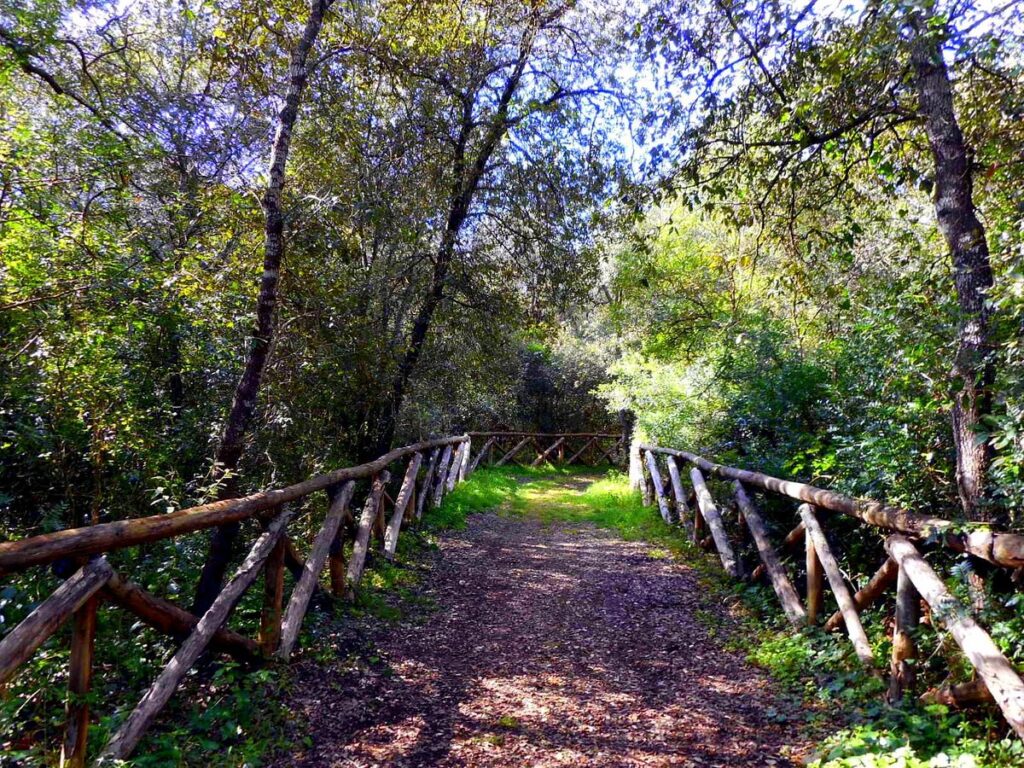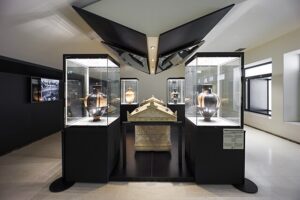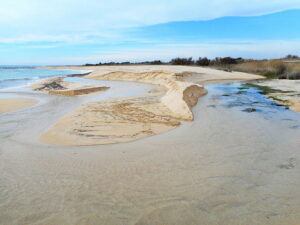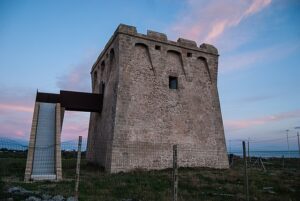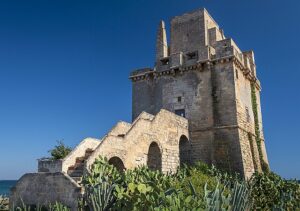History
Spanning over 35 hectares and located approximately 80 meters above sea level, the “Cuturi” Forest is part of the “Regional Natural Reserves of the Eastern Taranto Coast,” established by Regional Law No. 24 on December 23, 2002. These reserves extend over 1,000 hectares along the coastal strip and in the immediate hinterland of the Manduria area, in the province of Taranto.
This forest formation represents what remains, in the Manduria area, of the thousands of hectares of dense spontaneous vegetation known as the “Oritana Forest” or “Bosco dell’Arneo,” which in the past, as indicated by 16th-century documents, covered much of the territory between the municipality of Oria and the current locations of Porto Cesareo, Veglie, San Pancrazio, San Donaci, Torre Borraco. Over time, with deforestation that began in the 18th century and intensified in the 20th century, it has been almost completely destroyed. Within it, two areas of archaeological interest have been identified: one located on the eastern border, the other to the northeast, specifically between the boundary wall and the provincial road to San Pietro in Bevagna. Both areas have yielded several tombs carved into the rock, likely dating back to the Messapic period.
NATURE
The “Cuturi” Forest consists of a stand of holm oak (Quercus ilex) and, secondarily, a coppice of the same species. It also features a dense understory of species typical of the Mediterranean scrub, such as mastic (Pistacia lentiscus), phillyrea (Phillyrea angustifolia and P. latifolia), spiny broom (Calycotome spinosa), rockrose (Cistus incanus and C. salvifolius), thyme (Thymus capitatus), rosemary (Rosmarinus officinalis), wild olive (Olea oleaster), and wild pear (Pyrus pyraster). The herbaceous layer is mainly composed of common fumitory (Fumaria officinalis), annual mercury (Mercurialis annua), light green arum (Arum italicum), narrowleaf plantain (Plantago lanceolata), ivy-leaved cyclamen (Cyclamen hederifolium), and autumn crocus (Crocus nudiflorus). There are also several orchids, such as yellow ophrys (Ophrys lutea), large ophrys (Ophrys tentredinifrea), and lesser serapia (Serapias parviflora).
The area is an ideal habitat for numerous animal species: among mammals, common species include the fox (Vulpes vulpes), the marten (Martes faina), and the European hedgehog (Erinaceus europaeus); among birds, there are frequent sightings of the barn owl (Tyto alba), the common kestrel (Falco tinnunculus), the little owl (Athene noctua), and the common owl (Podarcis silicus); among reptiles, there is the green lizard (Lacerta bilineata), the Aegean gecko (Cyrtopodion kotschy), the smooth snake (Hierophis viridiflavus), the four-lined snake (Elaphe quatuorlineata), the leopard snake (Elaphe situla), and the common toad (Bufo bufo).

